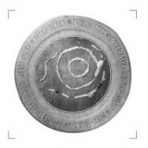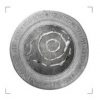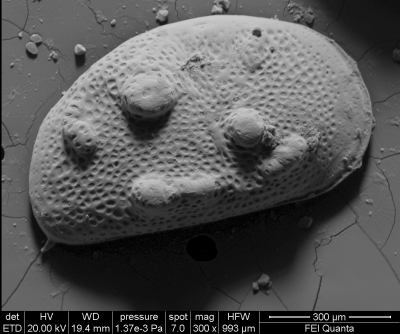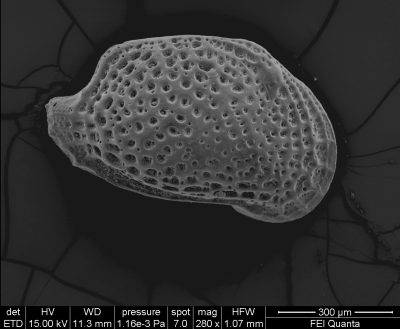At the Institute of Environmental Geology and Geoengineering of the CNR, the analyses of the ostracod associations occurring in the ad hoc sampled sediments from the Vetricella ditch and from the cores drilled in the alluvial plains of the Pecora and Cornia rivers are in progress.
Ostracods are small crustaceans (average length 1 mm) with the body enclosed between two calcareous valves. These are the fossils found in sediments. They can live in all aquatic environments, from the deep sea to temporary freshwater pools and are very selective with respect to some of the characteristics of the environment where they live. There are species that are particularly sensitive to changes in salinity, others that feed exclusively on Chara (a green alga), others that live only in environments where water flows weakly (Fig.1-2).
The study of the ostracod associations allows for very detailed paleoenvironmental reconstructions, in particular in coastal and lagoon environments where salinity variations may have been rapid and extreme.




